Why Does Burning Wood Produce a Canary-Yellow Flame?
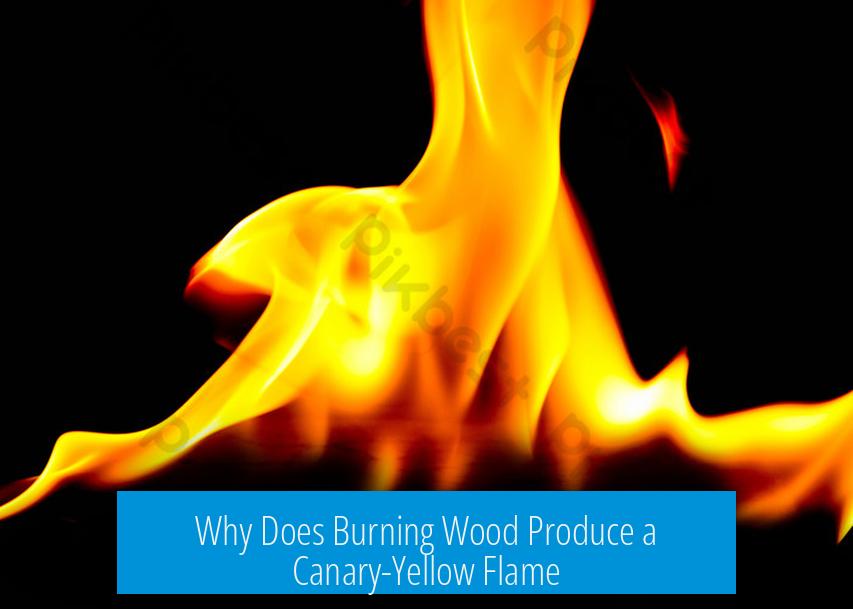
Burning wood can produce a canary-yellow flame due to the presence of sodium compounds in the material. Sodium emits a characteristic bright yellow light when heated, causing the flame’s distinct color.
The Role of Sodium in Flame Color
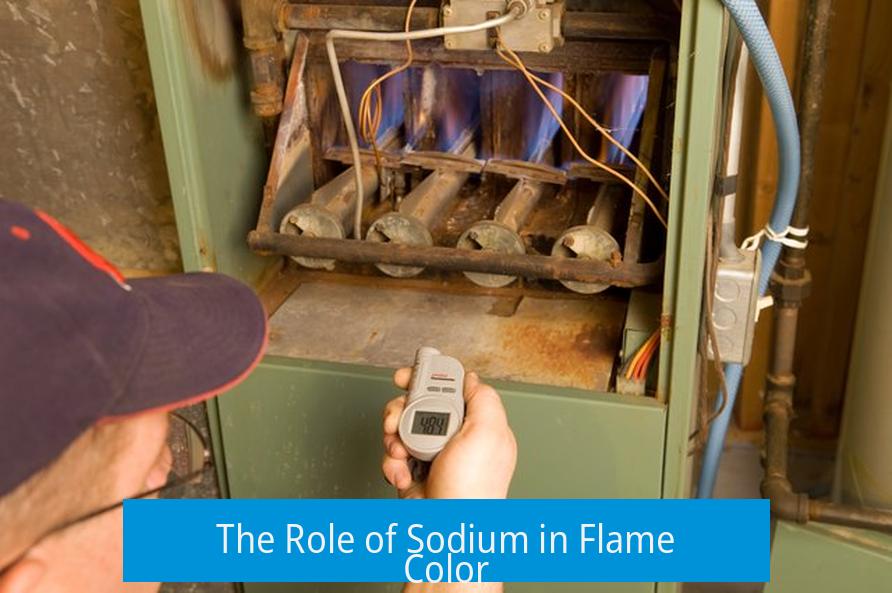
Sodium compounds, such as sodium chloride (common table salt) or sodium bromate, are often responsible for yellow flames. When wood contains traces of these sodium salts, either as impurities or from environmental contamination, the flame color shifts toward bright yellow.
- Sodium ions emit specific wavelengths of light near 589 nm, perceived as yellow.
- This emission dominates the flame’s color, overpowering other hues.
- Sources include road salt, treated wood, or pallets exposed to sodium-based chemicals.
Wood Combustion Chemistry and Flame Color
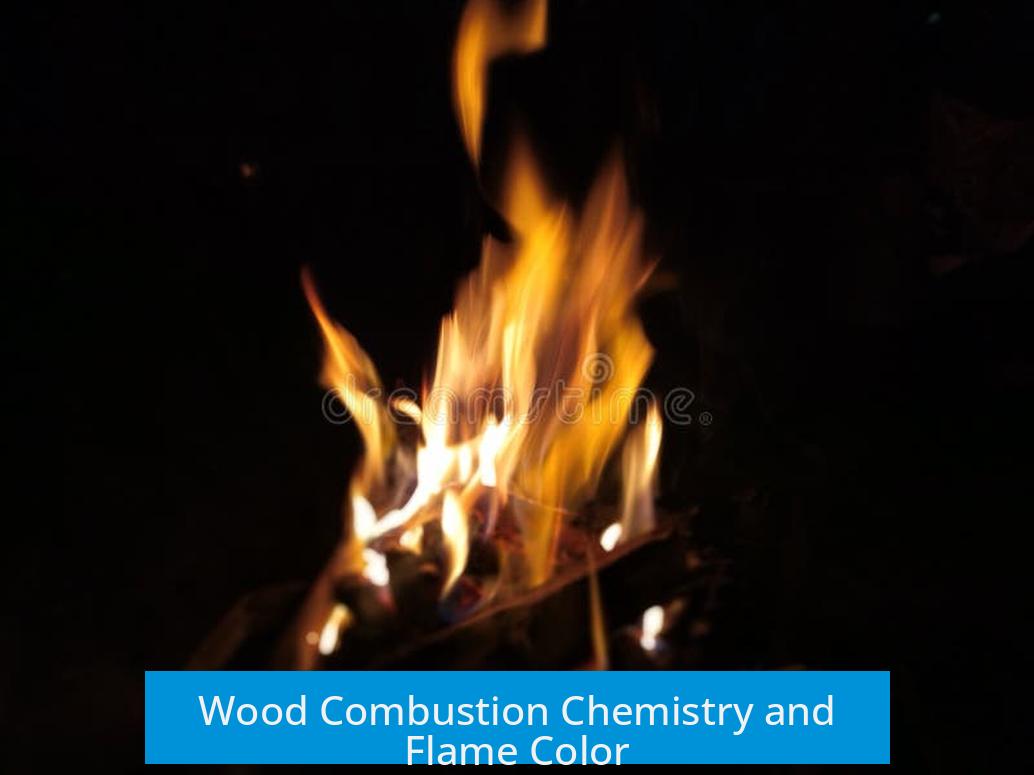
Wood combustion releases carbon particles and volatile organic compounds. Typically, incomplete combustion due to limited oxygen leads to a yellow-orange flame from glowing soot particles.
However, the hot flame itself often emits blue from excited molecular fragments like CH and C2. The presence of sodium ions overrides these natural colors, making the flame distinctly canary-yellow.
| Element/Compound | Flame Color | Cause |
|---|---|---|
| Carbon particles | Yellow-orange | Incandescent soot during incomplete combustion |
| Sodium ions (Na+) | Bright yellow (canary yellow) | Atomic emission of sodium at 589 nm |
| CH, C2 radicals | Blue flame | Combustion intermediates’ emission |
Contamination from Pallet Wood and Other Sources

Wood used for pallets or other purposes may have residues of sodium salts, such as when transporting rock salt for water softeners. This contamination enhances the sodium content, creating the yellow flame when burned.
Similarly, environmental exposure to road salting or chemical treatments can increase sodium levels in wood.
Summary of Key Points
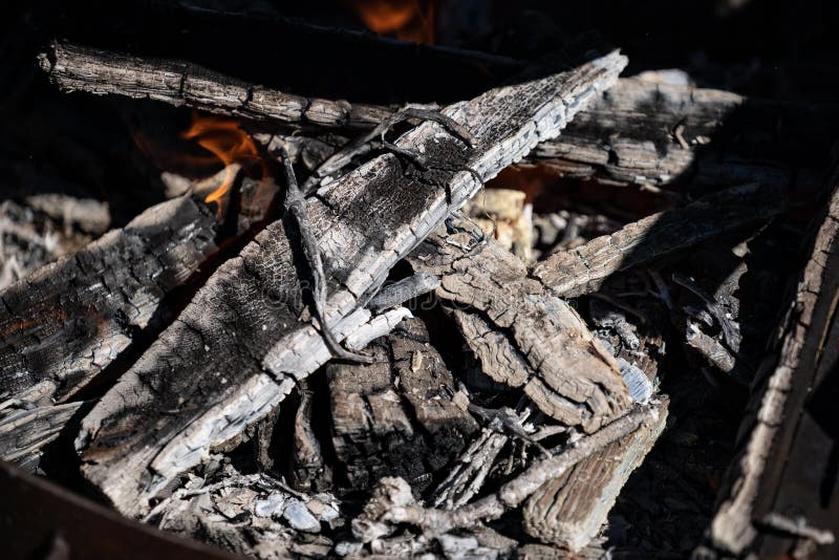
- Canary-yellow flame results primarily from sodium compounds in the wood.
- Sodium emits a bright yellow color at a wavelength of 589 nm.
- Wood combustion also produces yellow-orange flames from glowing soot.
- Contamination from road salt or pallet use often introduces sodium.
- Flame color indicates the chemical elements involved in combustion.
Burning Wood, Canary-Yellow Flame. Why Is This?
When you see a canary-yellow flame flickering in your wood fire, it’s not magic or just a campfire meme—you’re most likely witnessing the presence of sodium compounds. Yes, that bright yellow blaze is a telltale sign of sodium atoms dancing in the heat. But why is that? And how does sodium sneak into your firewood? Let’s break this down.
The Science Behind the Yellow Glow
Every flame tells a story, and color is its language. When wood burns, it undergoes combustion—a chemical reaction where oxygen meets the hydrocarbons and carbon locked inside the wood’s cells. Typically, if you have enough oxygen, wood burns cleanly with a blue or almost invisible flame. But when oxygen is limited, things change.
A yellow flame is often linked to incomplete combustion. The wood doesn’t burn entirely, releasing tiny carbon particles or soot that glow yellowish-orange when heated. These carbon particles reflect and scatter light, giving the fire that cozy glow many associate with campfires on crisp nights.
But there’s another twist here: sodium atoms produce a specific, bright yellow light—like a neon sign in the fire. Sodium’s electron configuration makes it emit a canary yellow color at about 589 nanometers wavelength. This sodium signature can overshadow other colors, making it easy to spot.
Where Does the Sodium Come From?
Here’s where it gets interesting and a little sneaky. Wood itself doesn’t naturally have much sodium. So, if you get a yellow flame, there’s a good chance sodium is hitching a ride onto your firewood through contamination or natural presence.
- Road Salt Residue: If you live in an area that salts roads during winter, wood stored near sidewalks or driveways may carry sodium chloride from these treatments.
- Pallet Wood: If the wood you’re burning was reclaimed from pallets, think about what those pallets might’ve hauled. Rocksalt for water softeners? Bingo. That salt can cling to the wood surface, releasing sodium ions during burning.
- Environmental Exposure: Common household chemicals or impurities in the wood can contain various sodium salts or compounds.
- Other Sodium Compounds: There’s speculation around Sodium Bromate and other less usual sodium compounds possibly contributing to the yellow flame, although sodium chloride remains the prime suspect.
So, if you’re inspecting your campfire or your indoor wood stove and wonder why the flames look like a bright canary in heat, check your wood source.
Is It Just Sodium Causing the Yellow Flame?
Well, no. Sodium is the prime suspect, but wood’s combustion chemistry is complex. During combustion, various hydrocarbons, especially unsaturated ones like ethyne (C2H2), arise. These molecules can also produce yellowish flames and smoke when oxygen is limited.
Also, incomplete combustion generates carbon monoxide and soot—both hazardous but beautiful in their fiery glow. The black carbon particles glowing orange-yellow contribute to that warm flame look we often see.
So it’s a combo—carbon particles glowing plus sodium atoms emitting their characteristic yellow light.
Why Does This Matter to You?
It’s more than fire aesthetics. Understanding why your wood burns with specific flame colors helps you:
- Check the healthiness of your fire: A lot of yellow flame and smoke might mean incomplete combustion, wasting fuel and creating toxins like carbon monoxide.
- Identify contamination: Burning chemically treated or contaminated wood can release harmful compounds.
- Improve fuel choice: Use clean, dry wood for efficient, safe burning.
In fact, proper oxygen supply ignites a cleaner flame—less harmful pollutants, better heat, and a happy environment.
Personal Campfire Chronicles
Once, while camping in the Rockies, a buddy and I roasted marshmallows over a woodpile near the roadside. The flames lit a bizarre bright yellow. We joked about magical campfire spells, but it was just a salty surprise from nearby road treatments. Lesson learned: fires reflect their environment, sometimes literally glowing with unexpected color.
Practical Tips If You Encounter Yellow Flames
- Inspect your firewood: Avoid pallets or wood near salted roads.
- Ventilate well: Ensure sufficient oxygen flow to encourage complete combustion.
- Burn dry, untreated wood: This minimizes contaminants and produces cleaner flames.
To Flame’s Color, There’s A Reason
Ever wonder about the campfire meme claiming any yellow flame means sodium? It’s mostly right. Sodium is the star here, emitting that iconic yellow shine. So next time your fire flares canary yellow, say hello to Na. You’re witnessing chemistry’s artistic touch up close—where elements produce their unique light show.
So yes, that bright, cheerful yellow isn’t just warm; it’s a chemistry certificate lighting up your wood fire. And that knowledge? Perfect fuel for your curiosity.
Why does burning wood sometimes produce a canary-yellow flame?
The yellow color mainly comes from sodium compounds in or on the wood. Sodium salts, like those from road salt or contamination, emit a bright yellow light when heated during combustion.
Can incomplete combustion of wood cause a yellow flame?
Yes. When wood burns without enough oxygen, it produces carbon particles that glow yellow. This incomplete burning also releases soot and carbon monoxide.
Could contamination of pallet wood cause a yellow flame?
Yes. Pallets used to carry materials like rock salt can leave sodium residues on the wood. Burning this contaminated wood can create the distinctive yellow flame.
Is sodium the only element causing yellow flames in burning wood?
Typically, sodium is the main cause of yellow flames. Other elements produce different colors. Yellow indicates sodium, often from impurities or additives on wood.
Does the yellow flame indicate a safe or dangerous combustion?
A yellow flame often means incomplete combustion. This can produce soot and carbon monoxide, which are harmful. Proper airflow is important for cleaner, safer burning.


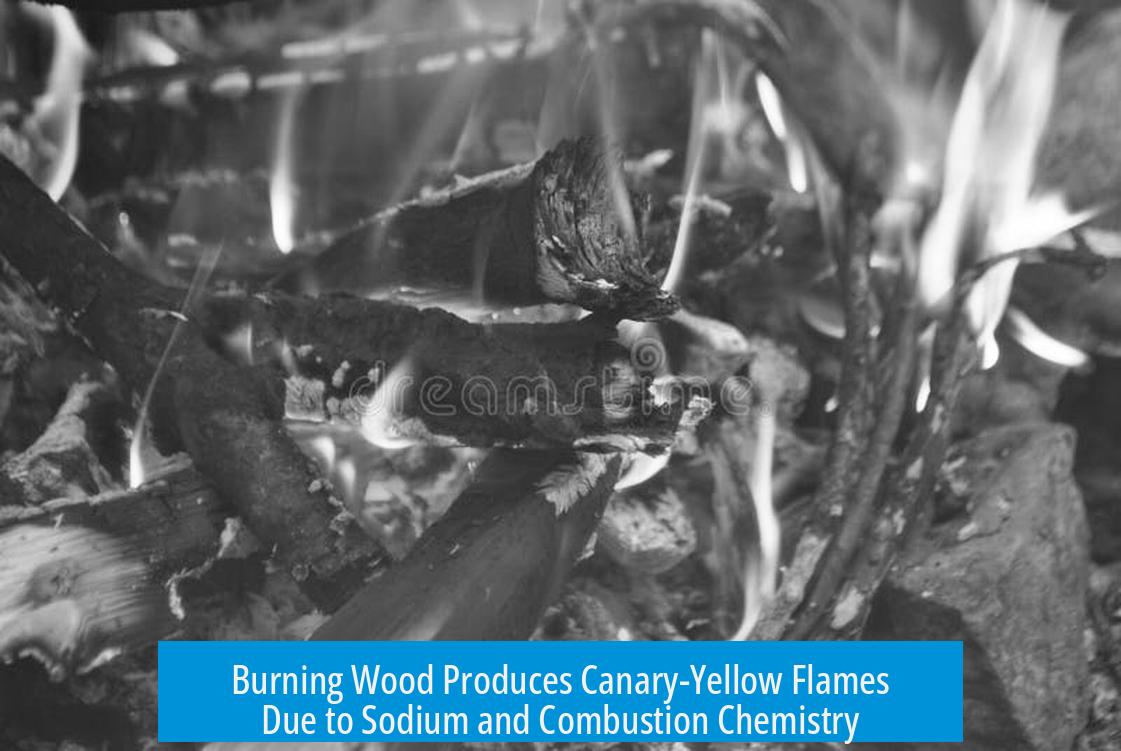


Leave a Comment